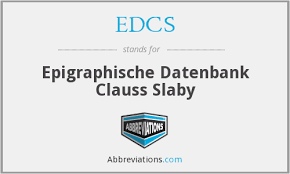Epitaph of a hunter
Reference CIL II2/7, 473; CLE 413 | Description | Lyrics | Location | Chronology | Epigraphic edition | Translation | Apparatus | Comentary | Type of verse | Text divided into verses and metric signs | Images | Bibliography | Link to DB | Author |
Epitaph of a hunter
Description
- Idno filename 22/01/0096
- Type of inscription: Sepulcralis
- Material Description: Fragment of Filabre marble, broken on the right-hand side and below, with no trace of the other lines it contained Villacevallos. In his drawing he reproduces the form of the letters and in the left margin of the folio writes the first word, Inspice, in its actual size as it was on the stone (0.7).
Lyrics
- Letter size:No data on the size of the letters, tending to italics cm
- Description of the letters:No data on the size of the letters, tending to italics
Location
- Place of discovery: Found in Castro del Río, from where it was moved in 1730 to Córdoba, to the house of Villacevallos
- Geolocation
- Conservation location: Missing
- Location with Modern Nomenclature España / Córdoba / Castro del Río
- Location with Old Nomenclature Hispania / Baetica / Astigitanus
Chronology
- Inscription's dating: Between year 1 and year 99
Type of verse
- Type of verse: Dactílico (ritmo)
- Verse/line correspondence: No
- Prose/verse distinction: No
Epigraphic edition
a) ínspice qui trans[is ‑ ‑ ‑]
venator studio ma+[‑ ‑ ‑]
lucorum cultor s[‑ ‑ ‑]
íungere qui vallis [‑ ‑ ‑]
5 adque novas scrobi[bus ‑ ‑ ‑]
[N‑ ‑ ‑] e [‑ ‑ ‑]
[V‑ ‑ ‑] o [I‑ ‑ ‑ ]
[S‑ ‑ ‑ ] ?
b) Iulia[nus]
Text divided into verses and metric signs
inspice qui transis[—] lkk|ll|[x/…]
venator studio ma[—] ll|lkk|l/x[…]
lucorum cultor s[—] ll|ll|l/[…]
iungere qui vallis[—] lkk|ll|x/[…]
5 adque novas scrobibus[—] lkk|lkk[x/…]
Translation
“Contemplate, you who pass by here [...] a keen hunter [...] inhabitant of these woods [...] who [...] join with fences [...] and new with ditches.” JMC.
Bibliography
Villacevallos, 1753, ms. BCC 60-1-17, 203r; Diversii, saec. XVIII, ms. BCC 56-4-9, sine foliorum numeris; Velázquez, saec. XVIII, ms. RAH 9/4106, involucrum 4, 3c; Capdevila 1670, ms. BAHM 621 apud Mestre 1990, 16 (inde Mayans apud Burmann, 1773, XLIV [inde Meyer 1835, I, 2, 168 et II, 2, 112 nº 1465]); Pérez Bayer, ms. 1782, 12v; ex Velázquez et Bayer Hübner II 2314 (inde Bücheler, CLE 413, cuius exemplum in linguam Hispanicam vertit Fernández Martínez 1998-99; Cholodniak 1904, 913 [inde Thigpen 1995, 330, appendix 3, nº 23]; Fita 1916, 117; Vives, ILER 5787; Piernavieja 1968, 58–59 n. 20 et CIDER, 31–32 et 234 nº 1; Cugusi 1986, 94 [inde HEp 1989, 249]) et id., cf. II 2335 et EE VIII p. 352; ex Mayans Stylow, II2/7, 473; Martín Camacho 2008, 184–193; id. CLEB ES, CO3, qui in linguam Hispanicam vertit. – Cf. García y Bellido 1967, 199–200; Mariner 1952, 52 et 184; Hernández Pérez 2001a, 192, 205–206, 211–213, 226 (adn. n. 858), 224, 247 (adn. n. 961); Gimeno – Stylow 2003, 195 (n. M. Vill. 86).
Apparatus
Versus dissimiliter exempli causa suppleverunt Bücheler, CLE 413 et Cholodniak 913. 1 tran… Villacevallos, Diversii; tra… Velázquez, Pérez Bayer. – 2 maii Diversii (haud recte post suppl. maiora); ma… omnes exc. m… Cugusi 1986, haud recte. – 3 cultor Velázquez, Pérez Bayer; cultor e… Capdevila, Mayans. – 4 valli Velázquez. – 5 scrob… Velázquez; sc… Capdevila, Mayans. – 6 omiserunt omnes; IVLIANI in achrostico esse suspicavit Cholodniak; IVLIANVS Piernavieja CIDER, Cugusi 1986 et Stylow, CIL II2/7.
Comentary
Dactylic verses, but it is impossible to ascertain whether they are a series of hexameters or elegiac distichs. Epitaph on the theme of hunting and work in the fields. L. 1. verbis inspice qui transis… is an appeal to the passer-by, perhaps so that he can read a possible acrostic, cf. CLE 511,10; CLE 108,10-12; vid. Martín Camacho 2008, 186-187, 189-190. L. 2 refers to his liking for hunting, cf. CIL II,2335, 3; or Cic. off. 1,108, 2; Ov. met. 3,413. L. 3. lucorum cultor interpreted as farmer (cf. Piernavieja, Cugusi and Hérnandez Pérez based on Verg. georg. 1,14 and Ov. fast. 5,499) but, given the previous line, lucus could refer to a wood consecrated to Diana, cf. CLE 256, according to Bücheler, regionem Dianae sacratam, where the author, silvarum cultor, offers trophies to a temple of Diana; in addition, in Hispania there is a lucus consecrated to Diana with an epigraph dedicated to her in Segobriga, Hübner II,5874; and lastly in CIL II,2660 there is a reference to another temple dedicated to the same goddess and its reverse side begins with: aequora conclusit campi divisque dicavit / et templum statuit tibi, Delia Virgo Triformis: that is, a sacred grove, where the author used to hunt (cf. l. 4. iungere qui vallis: this may be the action of joining and fencing off plots of land). To the interest in hunting l. 5 adds the work of cultivating the land.
Author
- Author:J. Martín Camacho
- Last Update2024-02-01 13:08:11
You can download this




